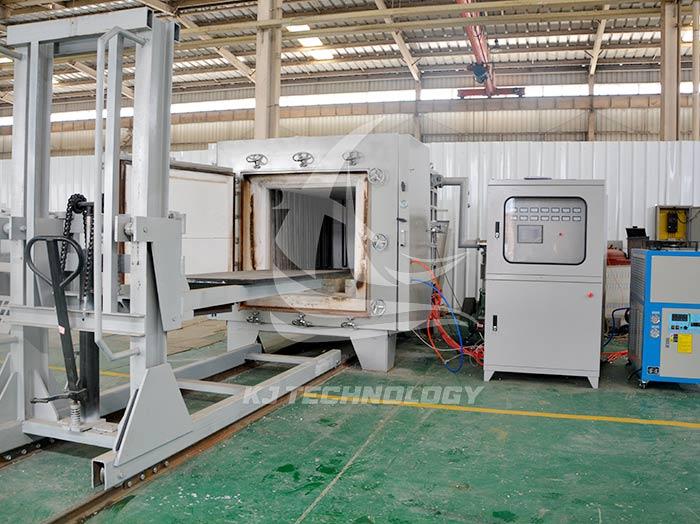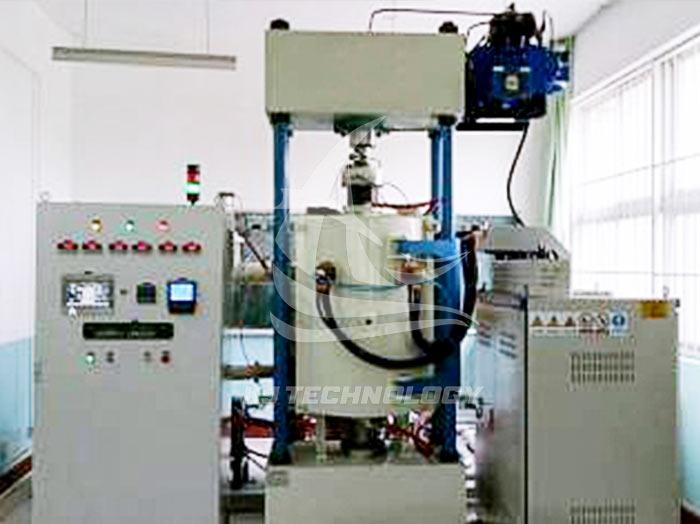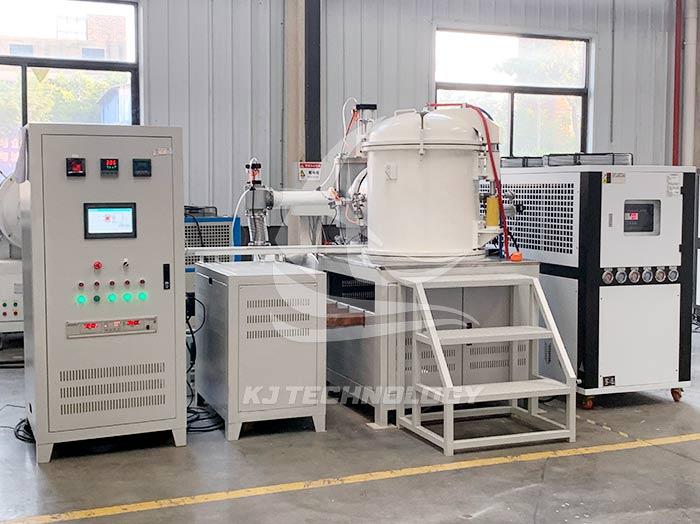Working principle of high vacuum heat treatment brazing electric furnace
 10-15-2025 Author: KJ technology
10-15-2025 Author: KJ technology
The high vacuum heat treatment brazing electric furnace creates a high vacuum environment and precise temperature control conditions, using brazing materials with a melting point lower than the base material to achieve metallurgical connection of workpieces. Its working principle covers five core links: furnace loading, vacuum pumping, heating brazing, cooling, and discharge. The specific steps are as follows:
1. Furnace loading: precise positioning of workpieces and brazing materials
Workpiece pretreatment: Clean and remove impurities such as oil stains and oxides on the surface of the workpiece to ensure a clean welding surface.
Solder laying: Apply flux (such as fluoride, chloride) to the welding area of the workpiece, and place solder (foil, wire, powder or spray coating). The melting point of the brazing material should be lower than that of the base material to avoid melting of the base material.
Positioning and fixation: Align and fix the workpiece to be welded, ensuring even gaps between the welding surfaces and providing space for filler metal filling.
2. Vacuum pumping: creating a non oxidizing environment
Vacuum system startup: The furnace chamber is gradually evacuated through mechanical pumps, Roots pumps, diffusion pumps (or molecular pumps) to reduce the pressure to the high vacuum level required by the process (usually below 10 ⁻² Pa, and in extreme cases up to 10 ⁻⁴ Pa).
Purification effect:
Removing oxides: High vacuum environment suppresses surface oxidation of workpieces (such as titanium, zirconium, stainless steel), avoiding the formation of oxide films that hinder wetting during brazing.
Eliminate gas interference: reduce the obstruction of gas to heat conduction and ensure the uniformity of furnace temperature (± 1 ℃ to ± 5 ℃).
3. Heating and brazing: melting brazing material to fill gaps
Heating control: Heat the workpiece according to the preset process curve (heating rate, brazing temperature, insulation time). For example, the brazing temperature for aluminum alloy is usually 500-600 ℃, and for titanium alloy it is 800-950 ℃.
Solder melting: When the temperature reaches the melting point of the solder, the solder melts and fills the gap between the workpiece with capillary action, forming a metallurgical bond.
Insulation stage: Maintain the brazing temperature to allow the brazing material to flow fully, ensure that the gap is completely filled, and promote the diffusion of elements between the base material and the brazing material, thereby improving the strength of the joint.
4. Cooling: forced cooling solidification joint
Fill with inert gas: After completing the insulation, fill the furnace with high-purity nitrogen (N ₂) or argon (Ar), and achieve rapid cooling through gas quenching.
Joint solidification: The brazing material solidifies during the cooling process, forming a welded joint that is firmly bonded to the base material and free of defects.
5. Out of the oven: Complete the removal of the workpiece
Temperature and pressure recovery: After the temperature inside the furnace drops to a safe range (such as below 50 ℃) and the pressure returns to normal pressure, open the furnace door.
Workpiece removal: Remove the brazed components for subsequent testing or processing.
Analysis of Equipment Core System
Vacuum system:
Multi stage pump group: mechanical pump (low vacuum), Roots pump (medium vacuum), diffusion pump/molecular pump (high vacuum) are connected in series to achieve a maximum vacuum degree exceeding 5.0 × 10 ⁻⁴ Pa.
Valve control: Pneumatic valves such as front-end valves, bypass valves, and high valves are automatically controlled by PLC to ensure precise pumping process.
Heating system:
Heating elements: graphite (1200-2000 ℃), molybdenum (1000-1700 ℃), stainless steel (<1000 ℃), etc., selected according to temperature requirements.
Multi zone temperature control: Temperature measurement points are arranged at the top, bottom, and sides of the heating zone, combined with intelligent PID regulation to ensure temperature uniformity.
Cooling system:
Water cooling machine: provides circulating cooling for furnace shell, electrodes, vacuum pumps and other components to ensure safe operation of equipment.
Gas quenching device: Rapid cooling is achieved by filling high-pressure inert gas to improve production efficiency.
Control system:
PLC+touch screen: Automated operation, capable of editing, storing, and calling brazing process curves, real-time monitoring of temperature, vacuum degree, pressure, and other parameters, and generating data reports.








